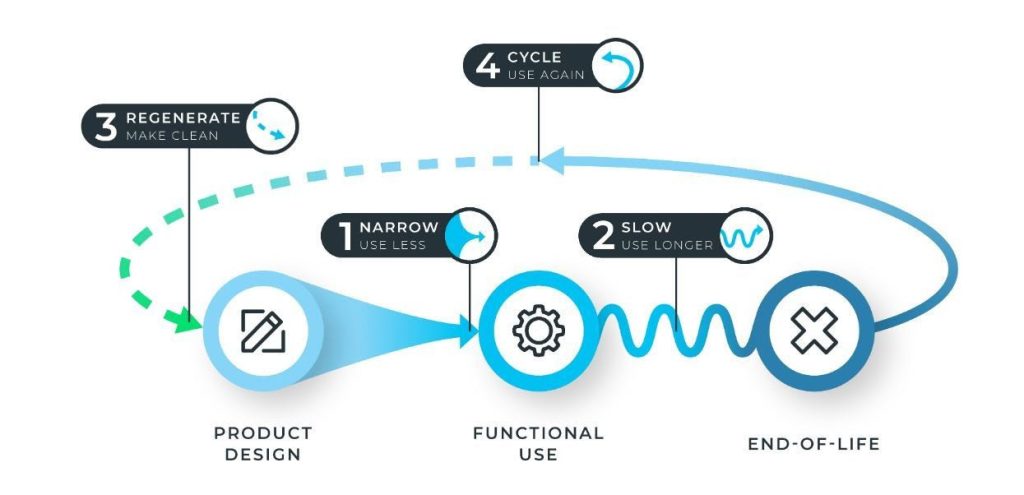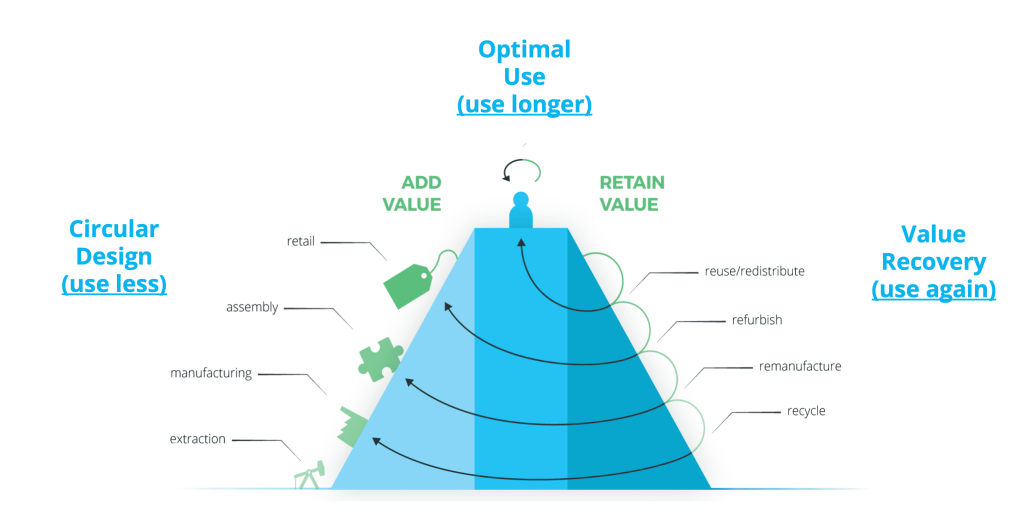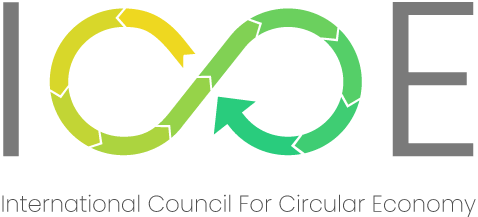Key Elements of a Circular Economy
A true circular economy can be achieved by mimicking nature's processes.
Circular economy is a concept, framework, and philosophy that promises a world without waste, where resources flow in endless loops without losing quality. Circular Economy doesn’t believe in infinite growth on a finite planet. Instead of interest rates and inflation, it looks at resources, or their waste flows. What comes in and out of systems, like factories, value chains, or cities. 4 principles of a circular economy include:
- Use less: use less resources, water, and energy to do business.
- Use longer: prolong the life of resources locked in your products
- Make clean: replace fossil and harmful resources with circular alternatives (biobased, recycled, regenerative, etc.)
- Use again: loop everything back, again and again, without losing quality.

Source: Circle Economy
What are the key strategies?
The circular economy is NOT just recycling. The 9R framework is the go-to set of strategies for reducing resource consumption, minimizing waste, and extending product lifecycles. Each “R” represents a circular principle, ranked by its environmental impact. The higher up the hierarchy, the better for efficiency and waste reduction. This framework is the backbone of circular strategies and a compass for businesses.

What's it in for the business?
When it comes to valuing the resources in a circular loop, the best tool is Value Hill, developed by Circle Economy. It visualizes the journey of value in the circular economy. It illustrates both the 9Rs and the 4 key principles at play.
In a linear economy, products climb the hill, and value rises during extraction, manufacturing, and assembly. The linear economy relies on infinite resource extraction and waste production which is not sustainable. Value peaks during the short-use phase. Then, the product is trashed, and its value crashes.
Whereas the circular economy works differently. The goal is to stay on top of the hill for as long as possible. Keep products in use. Extend their lifespan. And when it’s time to move on? Go downhill slowly. Repair or maintain to bounce products back into use. Refurbish or remanufacture to give them a second life. Recycle to recover valuable materials for future cycles.
The Value Hill has 3 phases:
![]() Design Phase: Minimize resource use and design for durability. Think modular, repairable, or recyclable products.
Design Phase: Minimize resource use and design for durability. Think modular, repairable, or recyclable products.![]() Use Phase: Keep products in use – whether through repairs, second-hand markets, or services like product leasing.
Use Phase: Keep products in use – whether through repairs, second-hand markets, or services like product leasing.![]() Recovery Phase: Close the loop with refurbishment, remanufacturing, or recycling.
Recovery Phase: Close the loop with refurbishment, remanufacturing, or recycling.


